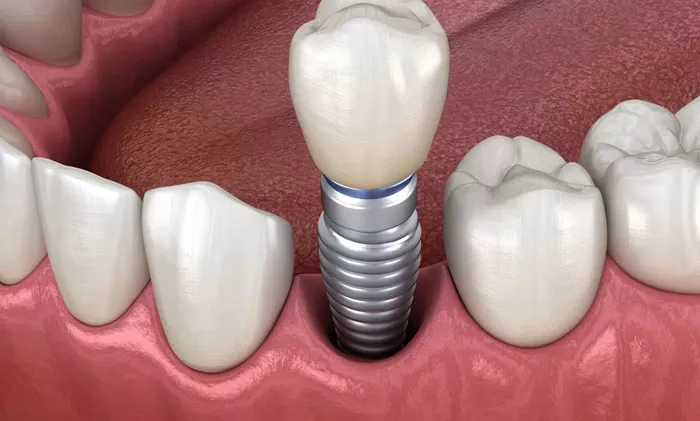Dental implants have become a cornerstone in modern dentistry, offering a permanent solution for missing teeth. But just how common are they? This article delves into the prevalence of dental implants, exploring their widespread use, the factors driving their popularity, and the demographics most likely to opt for this dental procedure.
Understanding Dental Implants
Dental implants are artificial tooth roots, typically made of titanium, that provide a permanent base for fixed or removable replacement teeth. They are designed to blend seamlessly with natural teeth, offering both functional and aesthetic benefits. The procedure involves surgically placing the implant into the jawbone, where it fuses with the bone over time, creating a stable foundation for the replacement tooth.
The Rising Popularity of Dental Implants
Why Are Dental Implants So Popular?
The popularity of dental implants can be attributed to several factors. Firstly, they offer a long-term solution for tooth loss, unlike dentures or bridges, which may need to be replaced or adjusted over time. Secondly, dental implants provide a natural look and feel, allowing patients to eat, speak, and smile with confidence. Additionally, advancements in dental technology have made the procedure more accessible and less invasive, further driving their adoption.
The Role of Aesthetics in Driving Demand
In today’s image-conscious society, the aesthetic appeal of dental implants cannot be overstated. People are increasingly seeking solutions that not only restore function but also enhance their appearance. Dental implants meet this demand by offering a solution that is virtually indistinguishable from natural teeth. This has made them a popular choice among individuals looking to improve their smile and overall facial aesthetics.
Demographics and Dental Implants
Age and Dental Implants
While dental implants are suitable for a wide range of ages, they are particularly popular among older adults. As people age, the likelihood of tooth loss increases due to factors such as gum disease, decay, and wear. Dental implants offer a durable and reliable solution for this demographic, helping them maintain their quality of life and oral health.
Gender Differences in Dental Implant Adoption
Research indicates that there are gender differences in the adoption of dental implants. Women are more likely to opt for dental implants than men, possibly due to a greater emphasis on aesthetics and oral health. However, the gap is narrowing as more men recognize the benefits of dental implants, both functionally and cosmetically.
Socioeconomic Factors Influencing Dental Implant Prevalence
Socioeconomic status also plays a role in the prevalence of dental implants. Individuals with higher incomes are more likely to afford the procedure, which can be costly. However, as the cost of dental implants becomes more competitive and financing options become available, their accessibility is increasing across different socioeconomic groups.
Geographic Variations in Dental Implant Prevalence
Dental Implants in Developed vs. Developing Countries
The prevalence of dental implants varies significantly between developed and developing countries. In developed nations, where advanced dental care is more accessible, dental implants are widely used. In contrast, in developing countries, the high cost and limited availability of specialized dental care can restrict access to dental implants. However, as global dental health awareness increases, the gap is gradually closing.
Urban vs. Rural Areas
Access to dental implants also differs between urban and rural areas. Urban centers, with their higher concentration of dental specialists and advanced facilities, tend to have higher rates of dental implant procedures. Rural areas, on the other hand, may face challenges such as limited access to specialized care and higher costs due to transportation and logistics.
The Impact of Dental Technology on Implant Prevalence
Advancements in Implant Materials and Techniques
Technological advancements have played a crucial role in the increasing prevalence of dental implants. Innovations in implant materials, such as the use of titanium alloys, have improved the durability and success rates of implants. Additionally, minimally invasive surgical techniques have reduced recovery times and made the procedure more appealing to a broader audience.
The Role of Digital Dentistry
Digital dentistry, including 3D imaging and computer-aided design (CAD), has revolutionized the dental implant process. These technologies allow for precise planning and placement of implants, enhancing outcomes and reducing the risk of complications. As digital dentistry becomes more widespread, it is expected to further boost the adoption of dental implants.
The Future of Dental Implants
While this article focuses on the current prevalence of dental implants, it’s worth noting that ongoing research and development are likely to continue shaping the field. Innovations in materials, techniques, and accessibility are expected to further increase the popularity of dental implants, making them an even more common solution for tooth loss in the years to come.
Conclusion
Dental implants have become a widely accepted and sought-after solution for tooth loss, driven by their functional benefits, aesthetic appeal, and advancements in dental technology. Their prevalence is influenced by various factors, including age, gender, socioeconomic status, and geographic location. As accessibility continues to improve and technology advances, dental implants are likely to become even more common, offering a reliable and long-lasting solution for individuals seeking to restore their smiles and oral health.

